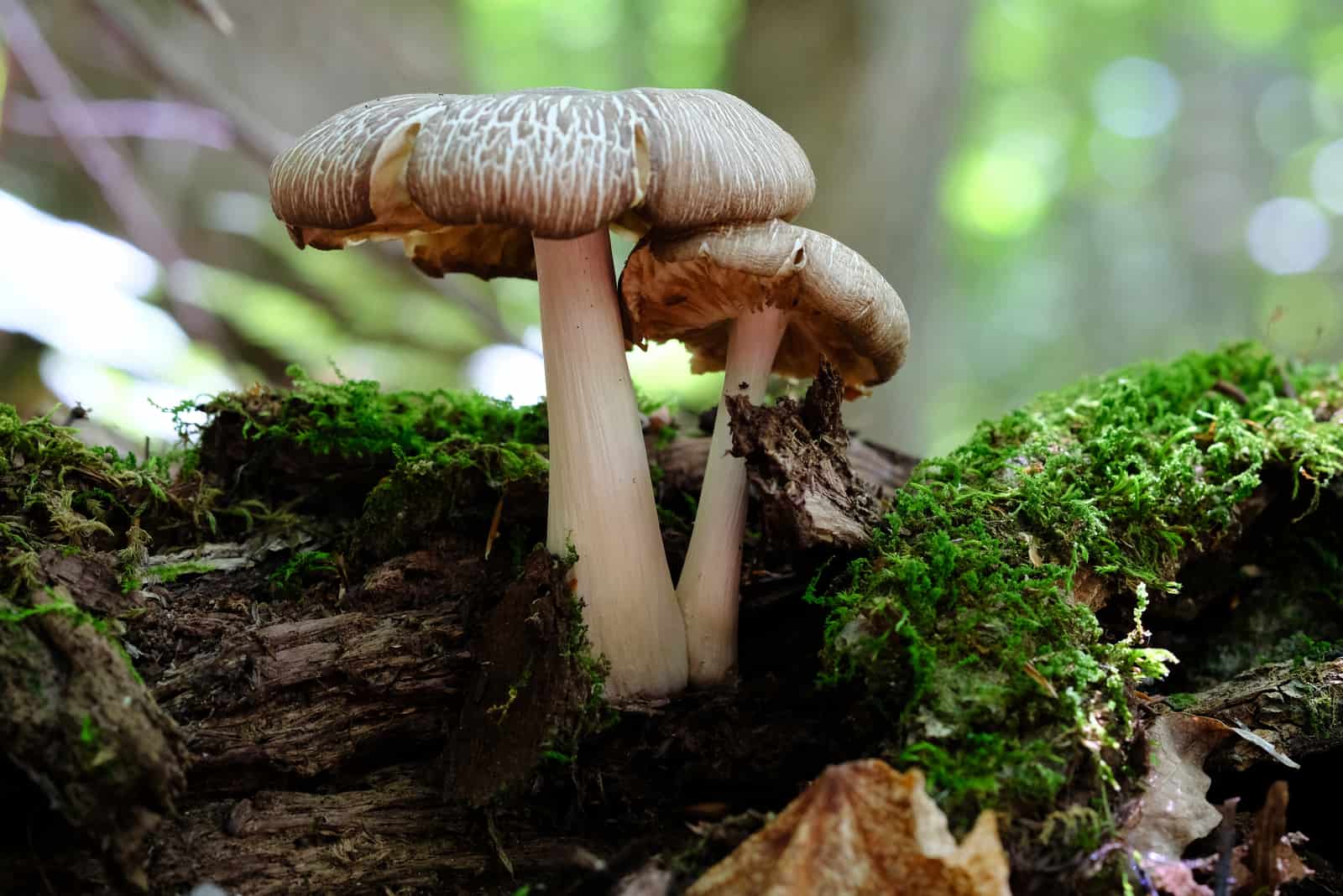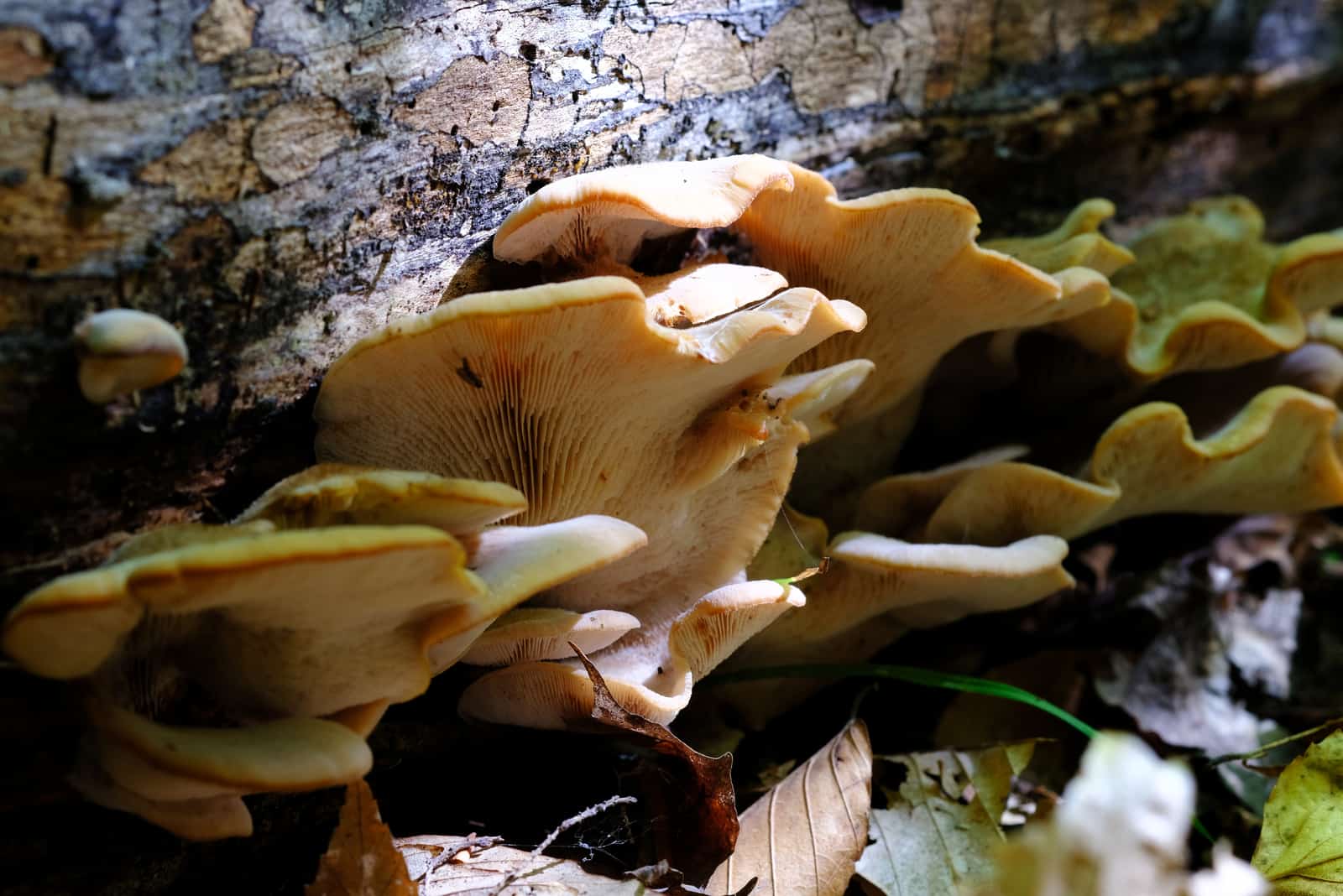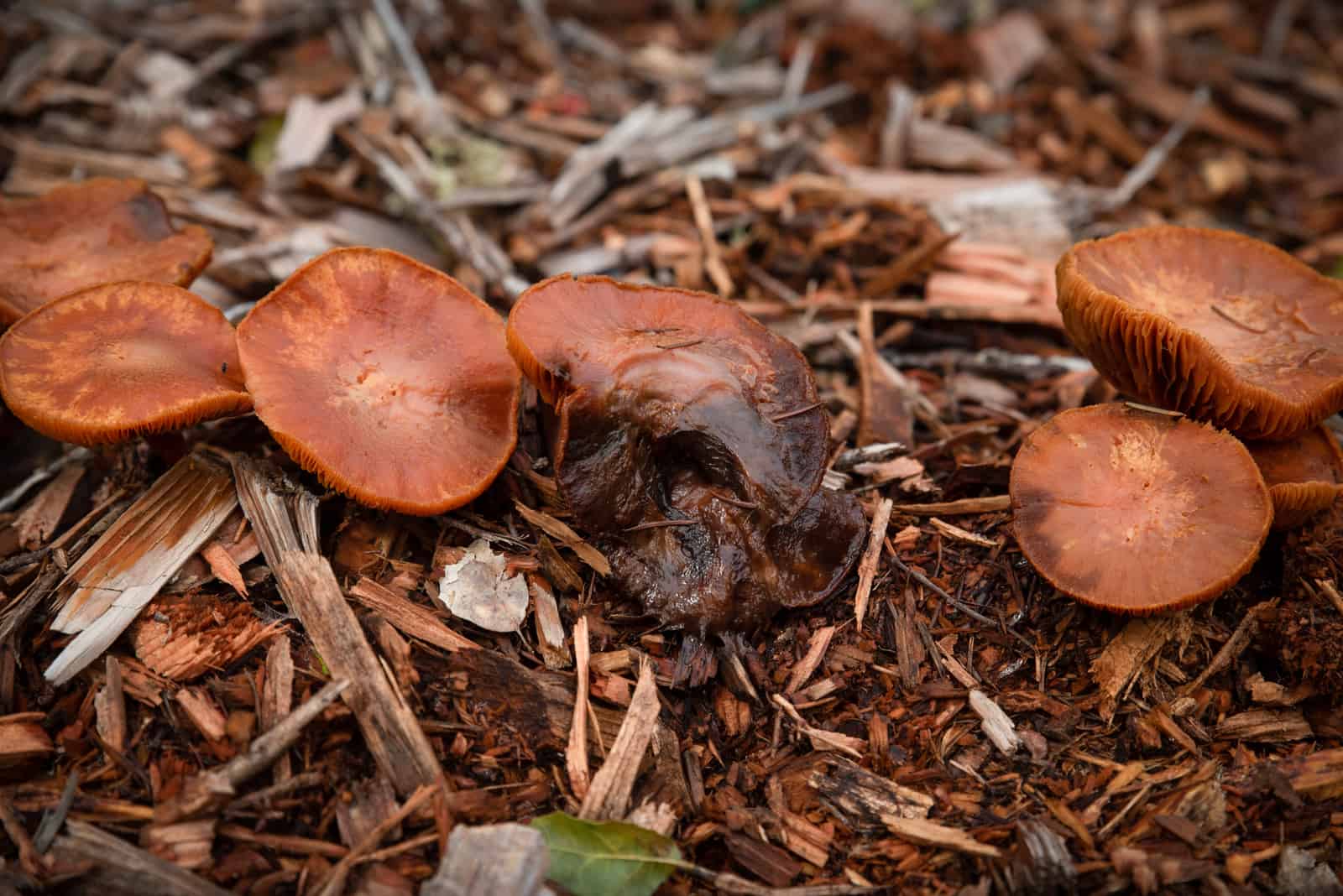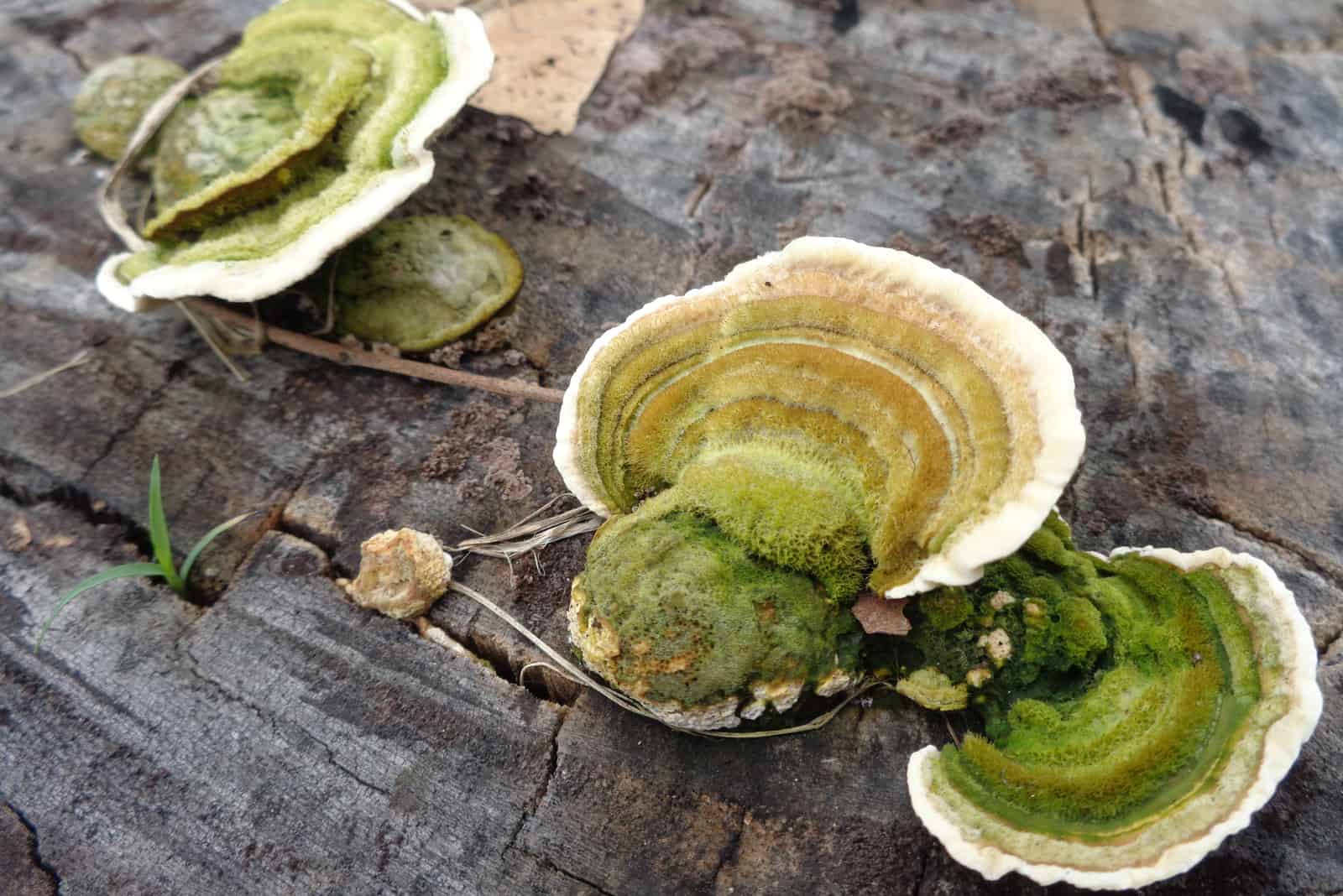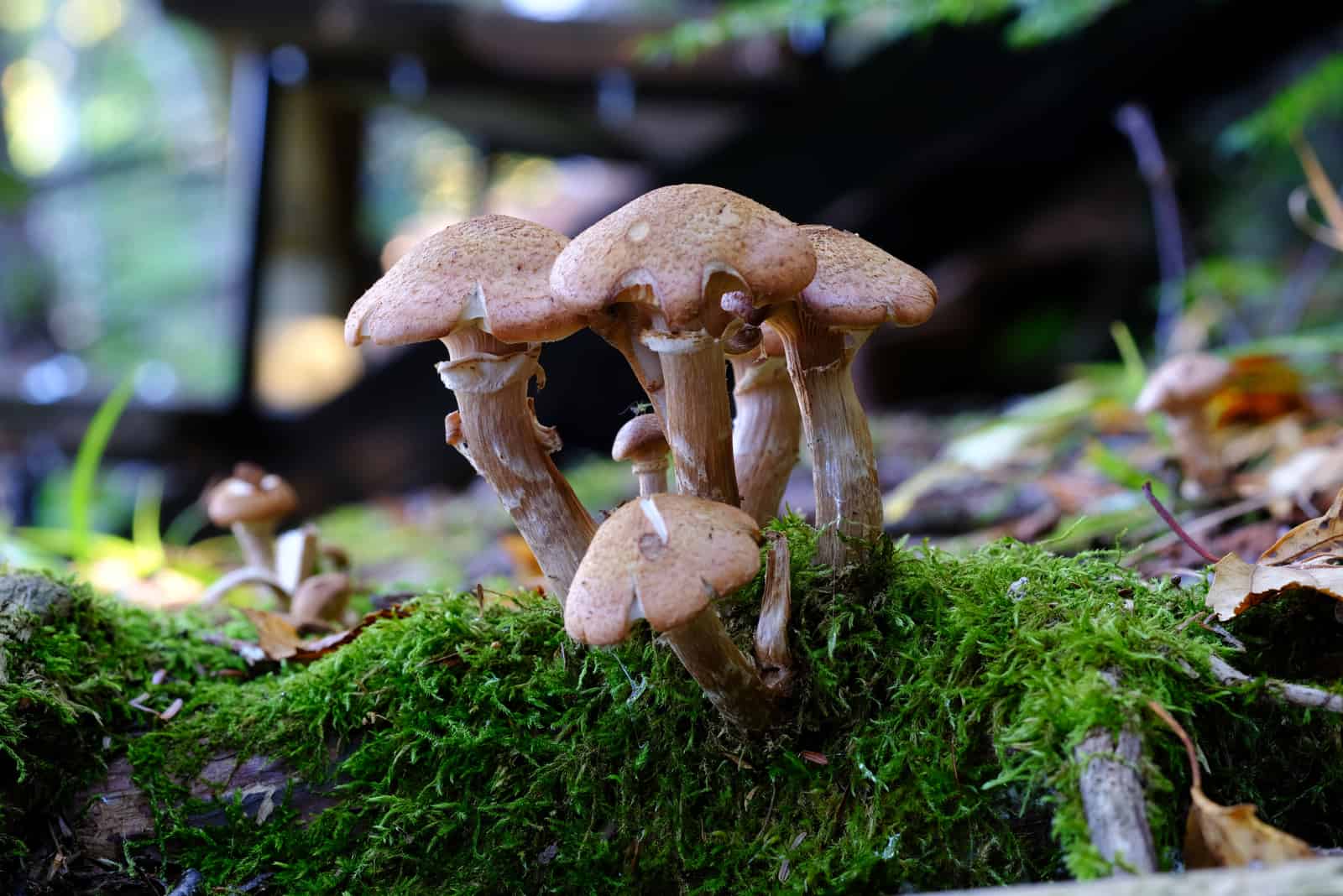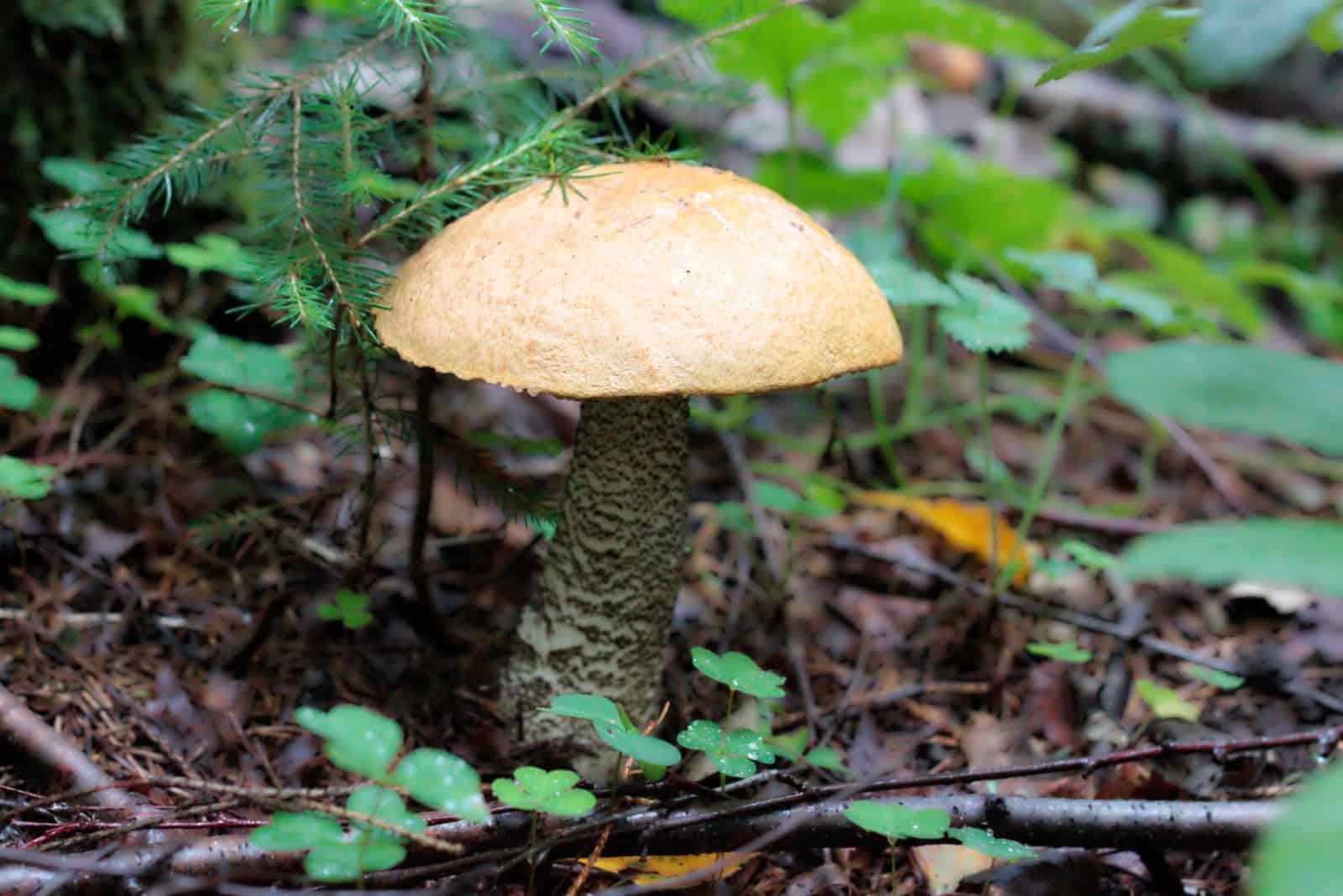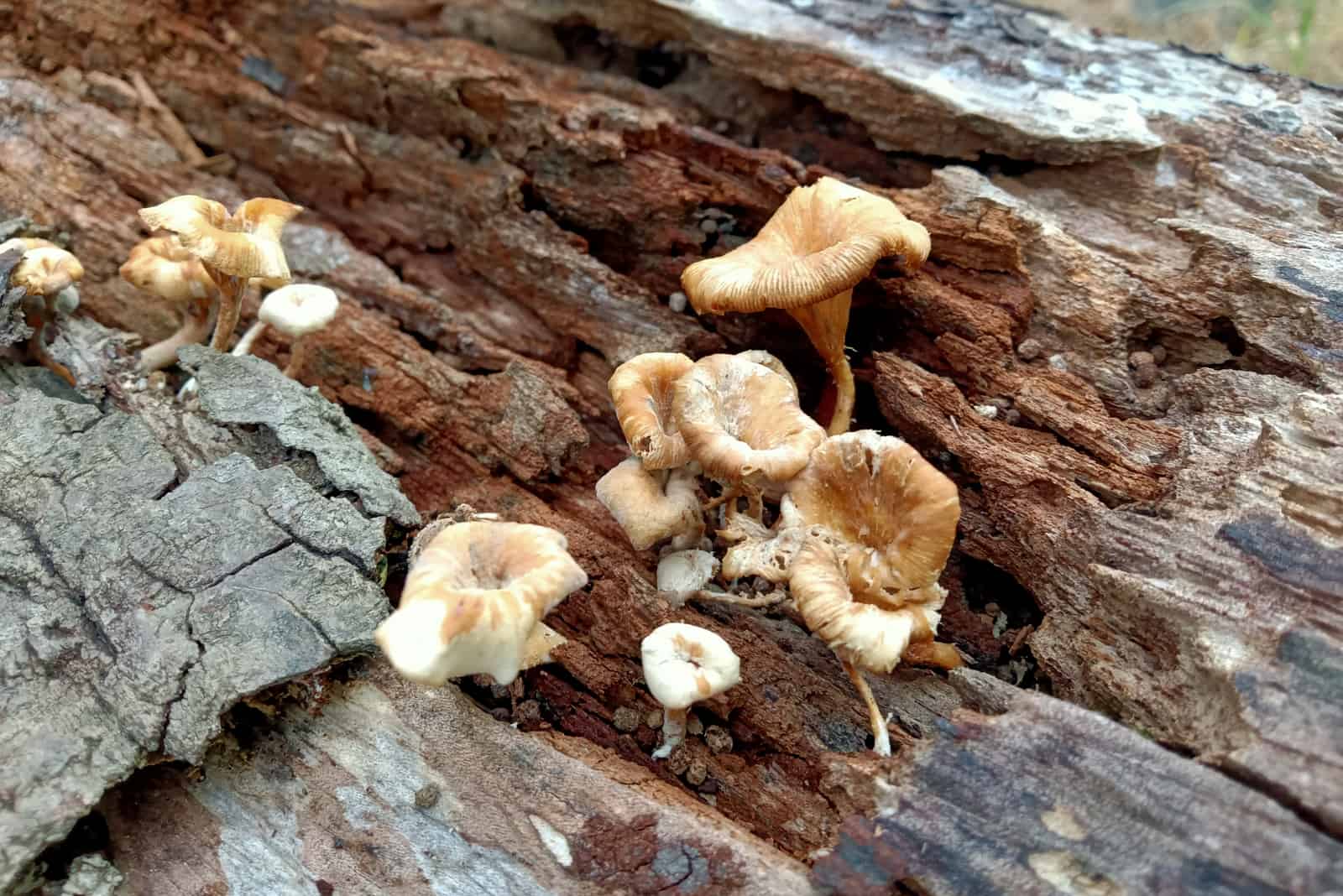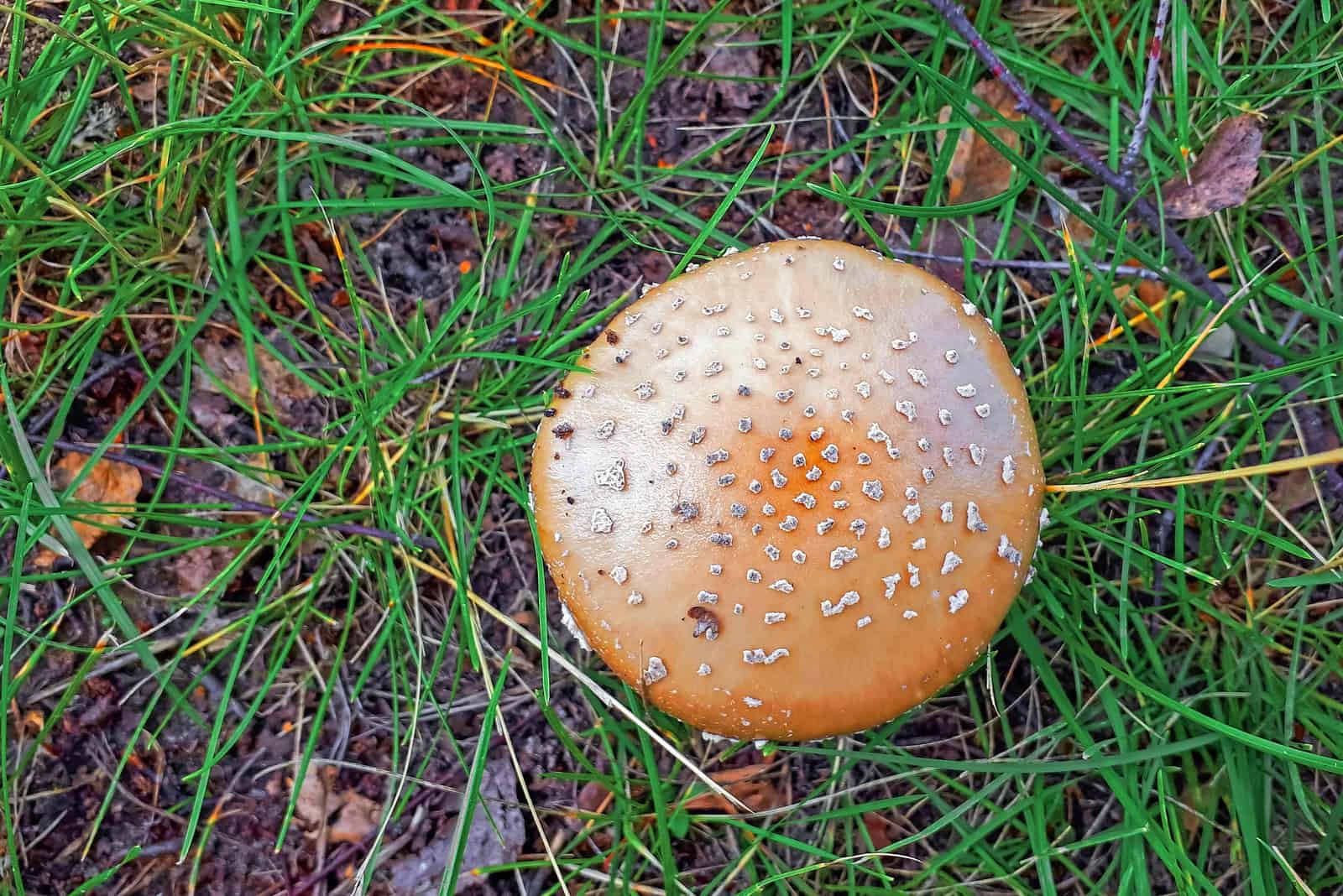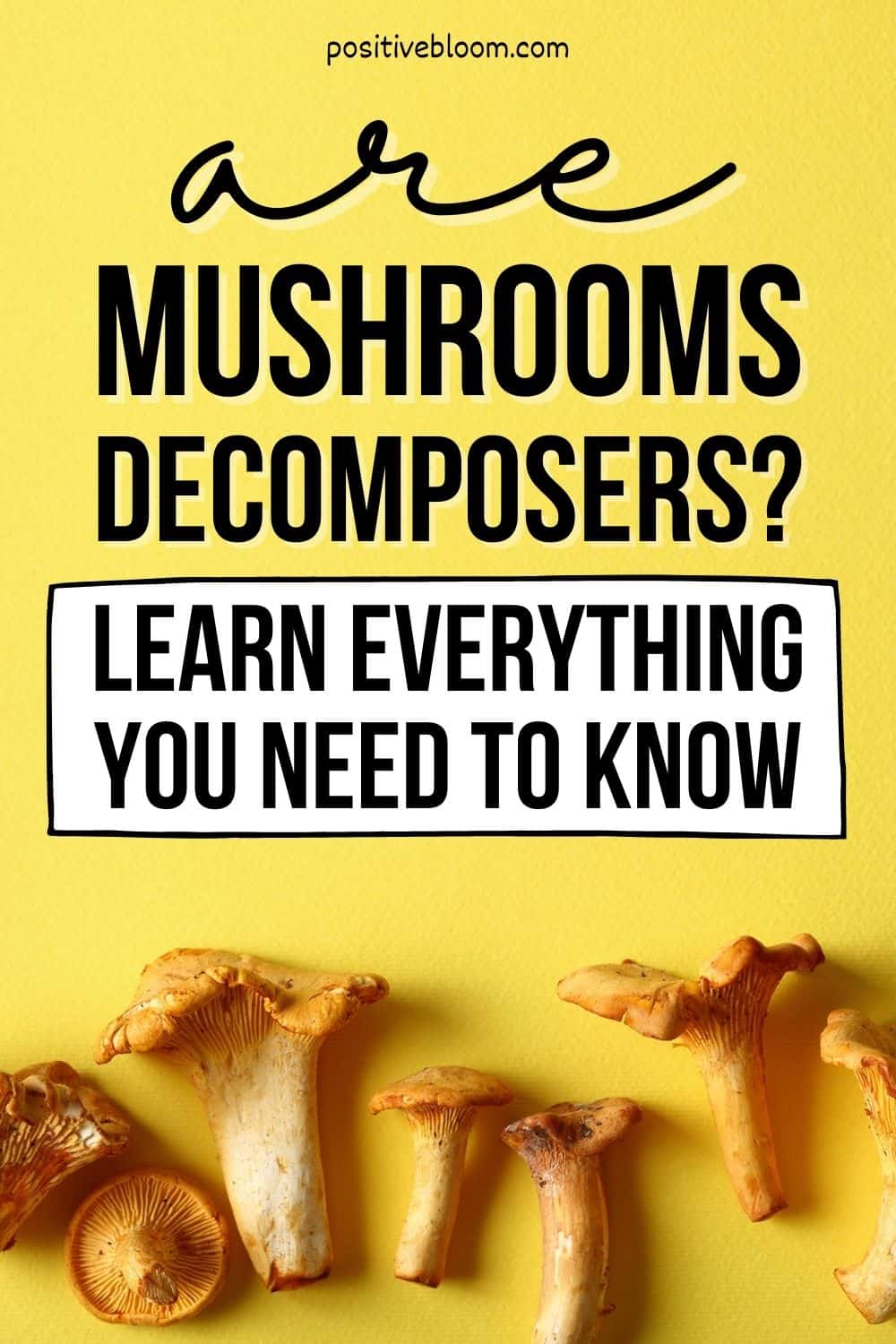We have always struggled with identifying mushrooms: are they plants, vegetables, some kind of meat perhaps, or what?
Well, we have the answer, and what got us thinking more, was another question: Are mushrooms decomposers?
You will find out everything you need to know about mushrooms as decomposers in this article, as well as some other things that might be useful to your overall gardening experience.
But, before we go into detail, let’s look at some general information about mushrooms:
| Scientific name: | they belong to the kingdom of Fungus |
| Native habitat: | temperate, northern, and tropical forests, lawns and open fields, sand dunes |
| Growth rate: | fast growers |
| Fruit size: | the size of the fruiting body varies between varieties, where the smallest type is around 0.8 inches (20 mm) long, and some can reach the height of approximately 35 feet (10.7 m) |
| Type: | both perennial and annual, depending on the species |
| Toxicity: | some varieties are highly toxic, whereas others are edible |
Now that you have some basic information about mushrooms, it is time to examine this strange fungus more thoroughly.
The following sections bring you information on how mushrooms produce their food, the benefits of that process, whether they are plants or animals, and many more things.
Stay with us, and let’s get started!
Are Mushrooms Decomposers?
Yes, mushrooms are decomposers, but before we get into detail about why and how they decompose, we need to explain the decomposition process.
It is a way of getting food necessary for existence. There are three ways of obtaining usable nutrients, and we will look into them more closely in the following section.
3 Ways Of Getting Food
Food is a necessary element in every ecosystem, and every organism plays its part as a producer, consumer, or decomposer.
We’ll explain more thoroughly these roles so that you can easily understand what role mushrooms have in the food chain.
Production
Some living things, such as plants, produce their own food, which is the first link in the food chain. Producers are also called autotrophs and are classified into photoautotrophs and chemoautotrophs.
Plants are photoautotrophs, and they use solar energy, carbon dioxide, and water to produce organic material by photosynthesis.
The necessary element in this process is chlorophyll, which absorbs the sunlight, without which, this process is not possible.
On the other hand, chemoautotrophs, such as certain kinds of bacteria and archaea, use chemical energy to produce sugar, which is a source of food.
Consummation
The following link in the food chain are the consumers, such as animals and people, and they obtain vital nutrients by eating other organisms.
Consumers are known as heterotrophs, and they can be herbivores, carnivores, and omnivores, depending on whether they solely eat plants, meat, or both.
Decomposition
The final place in the food chain is occupied by decomposers such as fungi, which absorb dead organisms, such as dead plants and dead animal matter.
Decomposition is a process in which decomposers break down dead organic matter and release inorganic material such as carbon dioxide and water, back to the soil, where producers can use it and start the entire process once again.
There are three types of decomposers: primary, secondary, and tertiary decomposers. Primary decomposers are the first ones that start breaking down the organic matter, whereas secondary decomposers depend upon the metabolic and by-products of the primary decomposers.
Tertiary decomposers digest whatever’s left from primary and secondary decomposers and further degrade the material.
Why Are Mushrooms Decomposers?
Mushrooms are decomposers because they cannot produce their own food.
However, they cannot be classified as consumers, even though they are heterotrophs and feed on organic matter.
Mushrooms don’t eat the food, rather, they directly absorb it, which is why they are classified as decomposers.
They are a cleanup crew, without whom dead plant matter, dead trees, and dead leaves would accumulate everywhere, leaving no room for living organisms.
Structure Of Mushrooms
In order to understand how mushrooms decompose decaying matter and help ecology, we first need to understand their structure.
The visible part of the mushroom consists of a stalk that carries the cap, from which we are usually able to identify the edible mushrooms from the poisonous ones.
Mushrooms don’t have roots like other plants; instead, they have a mycelium, a root-like structure from which mushrooms develop and grow.
Fungi mycelium is made of hyphae that look like threads. These root-like structures are necessary parts of the decomposition process as they contain enzymes that break down organic matter into something they can digest.
How Mushrooms Decompose Organic Material
Now that you know which parts of mushrooms take part in the process of decomposition, it is time to explain that process more thoroughly.
Depending on the variety, they are primary and secondary decomposers, and they break down organic material that plants can later use for food production.
Mushrooms grow their mycelia deep into the soil, dead trees, or foliage on the forest bed. The mycelia then release enzymes (proteins that accelerate chemical reactions).
These special enzymes break down cellulose and hemicellulose, a building material found in the cell walls of all plants.
Some fungi, such as white rot, can also decompose lignin, another complex structure found in the cell walls of bark and wood.
This process can take anywhere between a few hours to a couple of years, and in the following section, you can read about the main phases of the decomposition process.
5 Stages In Decomposition
1. Fragmentation
The first stage is fragmentation. This process refers to turning large pieces of decaying matter into smaller pieces. As the structure breaks down, fungi grow and spread. Invertebrates and bacteria are also crucial in this first stage.
For instance, slugs and snails ingest the dead matter, process it, and break it into smaller pieces, whereas fungi decompose the dead plant material through their hyphae.
The organic waste matter that consists of lignin, cellulose, hemicellulose, and microbial products is known as detritus, and fragmentation increases its surface area, which microbes can attack and alter.
2. Leaching
The fragmented material contains many organic and inorganic nutrients. They dissolve in water and seep into the soil, enriching it in the leaching process, during which they are removed from the detritus.
3. Catabolism
After the first two processes are finished, the enzymes from the fungi are released into the detritus, and they start decomposing the residue.
The complex organic molecules are broken down into simpler ones, and this process is followed by humification.
4. Humification
Humification refers to the process of the creation of humus, a dark layer in the top few inches of the soil which is highly rich in nutrients and contributes to the soil’s fertility.
Its texture is crumbly and loose, and it can endure any microbial action.
5. Mineralization
The final stage of the decomposition process is degrading the humus into inorganic materials, such as calcium, magnesium, potassium, ammonium, carbon dioxide, and water, which enrich the soil.
These minerals are later used by plants and other autotrophs, and the entire process of food production begins anew.
More About Fungi
Mushrooms are fungi, but they are not the only decomposers from this kingdom.
In this section, you can read about different types of fungi, their contribution to humans and the environment, and learn some other characteristics of mushrooms and other fungi.
Benefits Of Fungi
There are many benefits of fungi, decomposers that degrade plant and animal matter, recycle the nutrients, and release carbon dioxide and water into the soil, which plants then use for food production.
They also fixate nitrogen and mobilize phosphorus, which are the main nutrients that plants need for healthy growth.
Some mushrooms are edible and are rich in protein, fiber, minerals such as potassium, calcium, and phosphorus, and vitamins B, C, and D.
Some varieties of mushrooms have fantastic health benefits and can boost our immune system, help inhibit the development of tumors and AIDS, reduce cholesterol, have antiviral and antioxidant properties, and much more.
Finally, they are suitable for every ecosystem and our environment, as they help degrade pollutants like plastic, oils, personal care products, pharmaceuticals, and so on.
If you don’t feel like sifting through the immense data about the benefits of fungi to humans and the environment, you can simply watch this short video.
Symbiotic Relationship
Fungi don’t always decompose organic matter on their own. Sometimes, they enter symbiotic relationships with plants, which is commonly referred to as mycorrhiza.
They also get associated with cyanobacteria or green algae and form a symbiotic relationship known as lichen.
Mycorrhiza
Fungi intertwine their mycelia with the plants’ roots, and they get a constant source of carbohydrates, such as the glucose and sucrose that plants produce.
However, this is not a parasitic relationship, and plants do, in fact, have something to gain.
In return for the carbohydrates that help the fungi grow and develop, the plants get access to vital nutrients, such as phosphates and iron that can be found in the mycelia of these fungi.
Therefore, if you find mushrooms in your garden, leave them be; they’re doing you a great favor!
You can watch a short video that explains the importance of mycorrhiza for your garden.
Lichen
Fungi enter a mutually beneficial relationship with green algae or cyanobacteria, from which they get the carbohydrates necessary for their growth. The bacteria or algae produce these carbohydrates in their process of photosynthesis.
In return, fungi provide shelter and suitable habitat to green algae or cyanobacteria, as they are caught up in fungi hyphae.
Other Fungi Decomposers
Mushrooms and toadstools (inedible or poisonous mushrooms) are not the only types of fungi that act as decomposers. Single-celled organisms, known as yeasts, are also decomposers.
There are around 1500 species of yeasts; some are important for food and alcohol production, as they help in the fermentation process.
Other important fungi decomposers are molds. We might not like them as they cause our food to rot, but they also decompose decaying animal and plant material.
Examples Of Decomposers vs. Detritivores
Fungi are not the only decomposers that keep ecosystems up and running. Bacteria, millipedes, and termites are other common decomposers.
Actually, I was wrong; they’re not all decomposers. Bacteria and fungi are decomposers, but millipedes and termites are not, even though they do break down organic material in a certain way.
They are called detritivores, and the difference between them and fungi is that detritivores eat the food in order to gain necessary nutrients, whereas decomposers absorb it.
Detritivores are invertebrates, such as butterflies and earthworms, and, in the following section, we will look into other living things that decompose dead and decaying matter.
Bacteria
Bacteria are tiny, and you can’t see them with your bare eye. However, they are mighty strong when it comes to decomposition.
Just like fungi, they are primary decomposers as they secrete enzymes that can break down cellulose and hemicellulose.
Earthworms
Earthworms are detritivores, and they feed on dead matter. However, they are considered secondary decomposers as they cannot degrade the most complex compounds such as pectin, lignin, cellulose, and hemicellulose.ž
However, they still contribute to decomposition tremendously. Earthworms ingest the more complex organic matter and, as they break them down, the worm castings are mixed with the soil, which contributes to its fertility.
Millipedes
Millipedes are another important detritivore whose digestive enzymes break down the detritus into smaller components that can be consumed by tertiary decomposers, such as certain microbes.
They are an extremely important factor in decomposition where earthworms are rare.
Termites
Unlike other detritivores, termites are often primary decomposers, as they can digest the most complex compounds, such as cellulose.
However, they also decompose dead plants and dung, making them vital parts of the food chain.
Wrapping Up
We have come to the end of this article, and hopefully, your knowledge about decomposers and their importance has expanded.
The most important question in this article was “Are mushrooms decomposers?” and the answer is definitely “yes.”
Decomposers refer to those organisms that absorb decaying material, but there are other living beings involved in the process of decomposition that don’t absorb the dead organic material.
These creatures are known as detritivores, and the difference between decomposers and detritivores is that detritivores actually digest the organic matter.
Mushrooms, and other fungi, are one of the most important decomposers, as they can break down the most complex compounds, such as cellulose, hemicellulose, lignin, and pectin.
However, even though they are significant in the decomposition process, mushrooms have other benefits. Many varieties are edible and are extremely rich in nutrients, vitamins, and minerals that have excellent health benefits.
Finally, what else can we say about these fantastic organisms? Just make sure you don’t remove them from your lawns and gardens, and your plants will be forever grateful.
Like this post? Share or pin it for later!

